Animal Welfare Paramount on Live Export Voyage
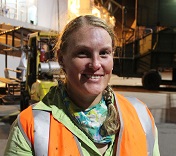 In May, I was given an opportunity by my employer AACo and Frontier International Northern to experience the live cattle supply chain first hand.
In May, I was given an opportunity by my employer AACo and Frontier International Northern to experience the live cattle supply chain first hand.
This started in Darwin, Australia, on a Sunday night, where I arrived at the port to greet the MV Greyman Express and began assisting in the loading process.
In my usual line of work, I am used to loading 10 trucks in a row at the most, but I’d never seen cattle being loaded at the port before, so to see 21 road-train loads roll up to the boat was certainly an eye opener. We started loading 3,571 cattle onto the vessel at about 9pm and were ready to set sail for Jakarta by 8am. I was very impressed by the systems in place to get the cattle quietly and efficiently from the trucks onto the ship and into their particular pens according to the loading plan. With seven individual road trains running back and forth from the export yards at Noonamah, south of Darwin, with room for 192 cattle in each run, there was a real routine about the whole exercise.
Being patient with livestock is always the most efficient way to operate and of course, some periods during the loading process were slower than others, particularly when the cattle were making their way down the ramps to the bottom deck.

The Greyman was on its third voyage, so to get to travel on a new state-of-the-art livestock carrier was a very special experience. Loading alongside the Greyman at the port was an older vessel with above-deck yards. It was an interesting contrast because the G-class vessels like the Greyman carry all of its stock below deck.
With this in mind, I was bracing myself to be hit by the strong smell of ammonia on the Greyman during the voyage. But to my surprise, even four days into the voyage when I would go below deck there was no such smell – a sign of the effectiveness of the modern ventilation systems.
I was very impressed with how quickly the cattle settled down once they were penned up, especially given they were station cattle and would have had minimal handling. Being in a more confined space than they were accustomed to, along with the presence of humans, and even the different food and watering systems, it didn’t take long for them to settle down at all.
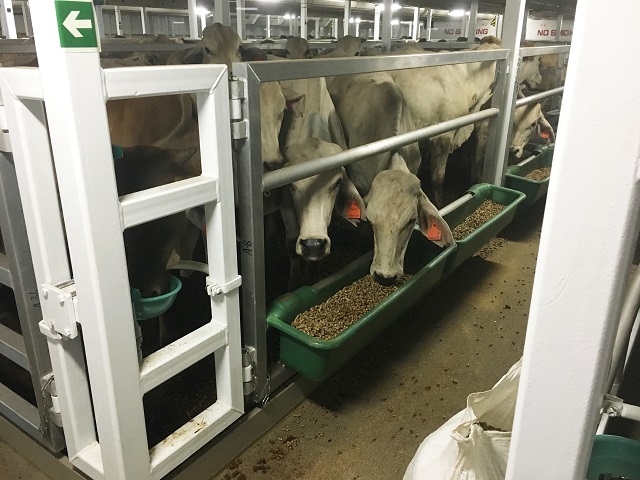
The ship’s automatic watering system was quite interesting, featuring self-watering troughs and relatively small dishes to hold the water. When the cattle drink the water level down, they instinctively press their muzzles against a float arm which activates and delivers more water. While it was fascinating to see the cattle catch-on to how it all worked, it was good to have a few humans on board to reset the floats as we walked past, just to help any cattle that were taking a bit longer to work the system out.
One of the most impressive aspects of the whole experience was watching the on-board stockman go about their duties. Anyone witnessing the work of an accredited, professional stockman is left under no illusions that the welfare of the animals is their highest priority.
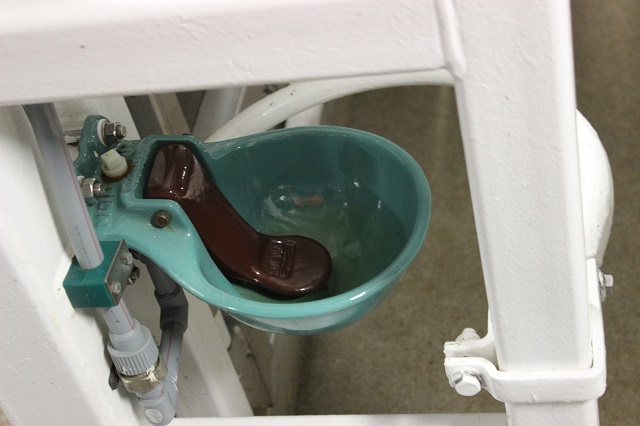
With so many animals on board, some health issues are inevitable, and just the same way that I experienced some mild sea sickness for the first 24 hours or so, it was obvious that some of the cattle on board also took a while to find their sea legs. As someone who has a real passion for the welfare of the stock I work with every day, to see how all the animals on board were monitored, and the way any cattle with health concerns were treated, was very reassuring.
Any sick animal was given every opportunity to recover, whether that was some extra attention in a hospital pen or whether it hadn’t completely taken to the pellet ration and needed to be provided with hay to eat. It was impressive to see that all the processes that are in place to help make sure a sick animal is as comfortable as possible.
Naturally, a handful of animals were also presenting with minor physical ailments, including some soreness perhaps arising from the loading process. An injection for pain relief can be provided to animals and I saw first-hand how such treatments made the voyage more comfortable for any animals in need. This isn’t just a big positive for the welfare of the cattle, but it is also very important for the safety of the people working on board.
Since the trip, I’ve been asked about the stocking density of the pens, which isn’t surprising because it was something I was interested in too. I saw up close the application of the science and research that has been done by industry to determine appropriate stocking standards in line with the category, weight and size of animal in the pen. The pens were filled according to the pre-calculated loading plan which provided enough space for the cattle to move. Even though they are generally very happy to be on their feet for long periods, there was sufficient room in each pen to allow the cattle to have a camp if they so desired.
The build-up of waste was fascinating because it actually created some extra bedding for the cattle. Yes, to us humans the idea of lying in feces might sound off-putting, but it certainly isn’t for cattle. There’s a lot of dry matter in cattle manure, so it works quite well as bedding. Anyone who has visited a trough in a paddock knows that the cattle either aren’t bothered about lying on their own waste or even seem to have a preference for it.
Of course, vigilance is required to ensure that dry waste doesn’t mix with water in a way that compromises animal welfare. This is especially important because of the way cattle often seem intent on picking a fight with watering systems, whether it is in the paddock or on a ship. Our voyage was no exception and, as a result, whenever a pipe or valve is busted and a water leak occurs, there is a risk that waste will become sticky and, in turn, cattle will become dirty. With more than 3500 cattle on board, not surprisingly a few managed to get themselves dirty but any at-risk animals were monitored and none presented in any way which constituted welfare concerns.
Thanks to the livestock management systems in place, the fundamental ingredients for good animal welfare like fresh air, comfortable pens and clean water were all readily accessible. I was especially impressed with the provision of clean water because cattle are always very picky when it comes to what they drink. The animals will always do better on clean water and the water they were drinking on the Greyman was impossible to fault.
Our voyage from Darwin to Jakarta on the Greyman took just on five days, including a bit of a delay when we got into Jakarta. I think we all probably have preconceptions about what the live export loading and unloading process is like, perhaps based on media snippets we’ve seen. So just as the loading process at Darwin was a new experience for me, the exercise of unloading in Jakarta was an even more of an eye opening experience.
If I was to describe the port at Jakarta in three words, they would be: busy, simplistic and effective. Contrasting with the big, long Australian road trains, we were unloading cattle in Jakarta and putting them on little Indonesian trucks which could take just 13 cattle per load. With two trucks backed up to a ramp with a divider at the end, when one truck was filled and set off, the divider would swing over like a big drafting gate, allowing the other truck to be loaded. Again, a patient approach proved to be the fastest and most efficient way to get the job done.
It was just great to see for myself that on the ship, we’ve got the right people with the right qualifications and experience looking after our cattle. The same goes for the discharge. We spoke to the Indonesian man who unloads the cattle at the port in Jakarta and how it was all a very calm process. There was no yelling at the cattle; there was no need because they just zoomed off the ramp and into the trucks. Of course, the odd one might have jumped at a shadow, but to see such a big exercise with so many cattle done so professionally and efficiently in the best way for the cattle was comforting.
Being such a new ship, there were still a few issues in the way the pens, gates and ramps were functioning. This is hardly surprising, as anyone who has used a new set of yards or a new stock crate will appreciate. For example, if a gate wasn’t quite opening the way it should have during discharge, the ship’s engineer would inspect the problem and typically make a short-term adjustment to allow unloading to continue safely. As needed, the engineer would make a note of the problem and make a more permanent adjustment after discharge to get the section functioning the way it should.
It’s apparent that the comfort of the animals on board is in the front of everyone’s minds at all times. I know it is easy to say that, but when you see the proof of that commitment you can’t help but be impressed.
Just like the AACo team of which I’m very proud to be a member, the Greyman crew clearly see themselves as livestock professionals too. The same fundamental animal welfare principles we abide by in the yards were being applied on the ship, which is a great credit to the crew.
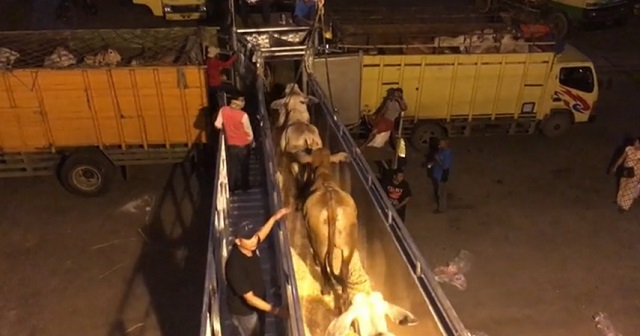
In Jakarta, we visited the TUM feedlot and I loved meeting the employees there. They are incredibly hard workers who take their jobs very seriously. They wash the feedlot pens out every single day because, as they said to us, the cleaner the pens are, the better the cattle do. They understood that dirty pens don’t lead to the best weight gains.
From what I saw there was a clear understanding of how their roles and responsibilities were linked to getting the most out of each animal. There was also clear understanding that a sick or unhealthy animal is bad for their business. Best of all, I saw for myself that the Indonesians are just as concerned for the welfare of the cattle animals as we are. This makes sense because, in relative monetary terms, a sick or injured steer in Indonesia is a far more costly than it would be in Australia.
To see the cattle we travelled with on the ship settle into the feedlot really added another level to my appreciation for the supply chain.
Similarly, it was very special to see AACo cattle that we’d mustered at Camfield Station in February performing so well in Indonesia. The Camfield cattle had been exported at average of 287 kilograms. When I saw them again, it had just gone 120 days since they arrived and they were all pushing 400kg which was an exceptional result.
Seeing how the export supply chain can work and how well we can work with the Indonesians demonstrated very clearly to me that with the right experience, and sharing our knowledge it can all come together so well. The experience confirmed for me that educating people, both here in Australia and in Indonesia, so everyone involved knows how to do the right thing, is absolutely the most important part of our whole industry. Giving people the knowledge and skills to look after animals is vital, because no-one wants to do the wrong thing by the animals in their care. That’s something that cuts across differences in language, culture and religion.
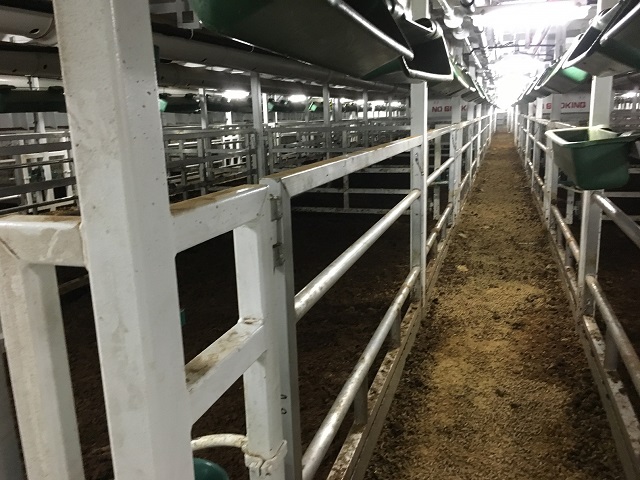
Education is such a big challenge for the live trade in particular, but for the beef industry in general too. There’s a lot of misconceptions about our industry in the community which come from a lack of understanding. And while we can’t force our opinions on others, educating people so they are less likely to rely on myths, misconceptions and assumptions is vital.
Every time the industry attracts negative coverage, it not only perpetuates the misconceptions, but also fails to tell the real story of the industry and of those of us working in it.
Even though animal welfare is something we live and breathe, it is sometimes difficult to get that message across to the broader public. For anyone to make a profit in this industry, it’s the happy, healthy animals which are making us money and keeping us in jobs. That is our wonderful, simply story in nutshell.
My experience on board the Greyman and in Indonesia taught me so much. It helped fill my own knowledge gaps in terms of the live trade and also cleared up some misconceptions I had. I know I haven’t been on every livestock ship or visited every market, but the experience I gained was a very positive one. I’m now even prouder to be a part of the cattle industry, working for a wonderful company and playing a small role in a wonderfully modern, professional international supply chain.
Kelly Ennis is the manager of AACo’s Pell Airstrip Station, south of Darwin, Australia.
The opinions expressed herein are the author's and not necessarily those of The Maritime Executive.
